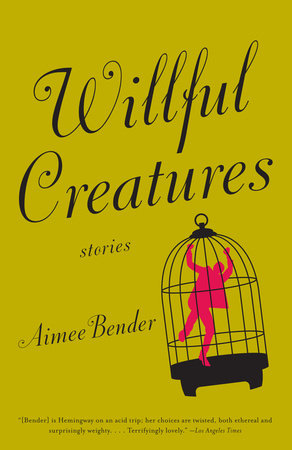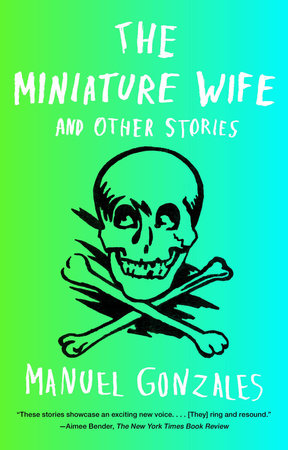When I was a little girl I loved stories about miniature people: first picture books about Tom Thumb and Thumbelina, then mighty Little My from Tove Janson’s Moomintroll books, Mistress Masham’s Respose by T.H. White, Rumer Godden’s The Dolls’ House, but above all, The Borrowers series by Mary Norton. The tiny Borrower family lead a secret life inside the walls of old houses, and once discovered, light out into the enormous wilderness of the front yard and the field. I loved The Borrowers beyond all reason.
In his memoir, C.S. Lewis describes his first experience of joy when, as a very young child, he first saw a miniature garden constructed by his older brother. He describes his feeling upon gazing on that tiny world as closest to “Milton’s ‘enormous bliss’ of Eden.” That’s it: the transcendent, numinous feeling of bliss upon an encounter with a miniature world.
The received wisdom is that children love stories about miniature people because they themselves are miniature people. But that doesn’t fully explain the intensity of this passion for the diminutive. Perhaps that “enormous bliss” can be explained by the concept of the uncanny valley. It’s the idea that things that appear almost human, but not quite, give us an eery jolt of recognition. The uncanny valley can elicit disgust, but for me, that uncanny, strangely familiar feeling when reading about tiny people turns the mundane magical. In 1917 literary theorist Victor Shklovsky wrote that poetry acts as a defamiliarization technique, “to make things unfamiliar,” so that we can really see and feel aspects of our existence as if for the first time. Tiny people are like tiny poems that remind us about what it means to be human.
And some of these tiny poems are definitely not for children. Narratives about miniature people can tell complicated, grown-up stories about pleasure and power, about what happens when ferocity is compressed into a very small space, about the ways love is imbricated with cruelty, about the uncomfortable side of that “enormous bliss.” Here, I give you seven stories of miniature people for adults that I hope will bring you enormous (uncanny, uncomfortable) bliss.

“The Diamond Lens” by Fitz James O’Brien
As a child, Linley, destined to become a mad scientist, finds his enormous bliss in the marvels under a microscope. He’s the main character in “The Diamond Lens,” written by Fitz James O’Brien and published in The Atlantic Monthly in 1858. O’Brien is a practitioner of what was then called Scientific Romance in the vein of Jules Verne or H.G. Wells. The story’s charms come from its 19th century mix of melodrama with the vision of the limitlessness possibilities of scientific discovery, including the “‘science”’ of speaking to the dead and finding a microscopic heaven. The story simmers along from spiritualism to theft to murder, with some ugly antisemitism along the way, and reaches the boiling point when Linley discovers a woman with “suave and enchanting curves” in a drop of water. Linley names her an “animalcule” and falls in love. You can probably guess this love story will not end well.

“Domestic Appliance” by Jennifer Fliss
Jennifer Fliss’ contemporary story “Domestic Appliance” is also about the doomed love between a big man and a tiny woman, but here we find ourselves in the point of view of a woman who lives in a suburban stainless steel refrigerator and sleeps on a stick of butter. The tiny woman’s life in the refrigerator is antically rendered—she “stares into a (pickle) jar for hours” and “avoided the condiments” but she is a domestic captive, a miniature metaphor for the suburban wife who owns the refrigerator. Little woman and big woman both love the same untrustworthy man, and neither of them escape before the door slams shut.

“Suburbia!” by Amy Silverberg
The diminishing effects of suburbia is also a theme in Amy Silverberg’s “Suburbia!” first published in the Southern Review and republished in Best American Short Stories, 2018. A father bets his daughter she will leave home at eighteen and never return. If she returns, she loses the bet. A week after her eighteenth birthday, an age when she is “an egg balanced on a spoon,” the girl’s father hands her two wads of cash, puts her on a train, and she is sent off to seek her fortune. I don’t want to give away too much of this story that manages to be both buoyant and sad at the same time, but its surprisingly tiny end allows us to see “the way the past and the future could both shrink down to a manageable size, like a pill to be swallowed, or the head of a match.”

“End of the Line” by Aimee Bender
The complicated power of laughter is at the heart of a trio of stories about miniature people. Aimee Bender’s “End of the Line,” (made into a 14 minute film by Jessica Sanders) from her collection Willful Creatures begins: “The man went to the pet store to buy himself a little man to keep him company.” In this disturbing captivity narrative there are only two characters, a lonely, big man and the little man he’s caged. At first the big man laughs and laughs at the little man, but when the little man proves to have a wife and children, to have travelled, to be better at numbers, to emit his own high-pitched laughter, in fact to have a ‘bigger’ life than the lonely big man does, the big man begins torturing the little man. But the little man practices passive resistance: “A man familiar with pain has entered a new kind of freedom,” and, as in all these stories, the tiny character turns out to have his own surprising power.

“The Miniature Wife” by Manuel Gonzales
“The Miniature Wife” brings to mind Margaret Atwood’s famous statement: “Men are afraid that women will laugh at them. Women are afraid that men will kill them.” A man’s wife laughs at him too often, so he shrinks her with a device he stole from work. He reassures his outraged spouse that “he would take care of her now…He wondered if this could be the answer to all their marital woes?” It isn’t. When he is still unable to control her, he locks her in the dollhouse he has made for her, then burns it down. But hell hath no fury like a woman made to feel small.

“The Smallest Woman in the World” by Clarice Lispector
Perhaps Bender and Gonzalez read and loved, as I did, “The Smallest Woman in the World,” by Clarice Lispector (published in 1960, translated from the Portuguese by the poet Elizabeth Bishop). At first this narrative seems to be upholding every stereotype of the “jungle” and the “great” explorer who discovers amongst the “lazy” green trees and the “swelling” fruit a tiny person as “black as a monkey.” The explorer immediately tries to “order” her, name her, get this “other” under control. The response of the smallest woman in the world makes the explorer “distinctly ill at ease.” It’s just a smile, but “a smile that the uncomfortable explorer did not succeed in classifying” because it is brimming with uncontainable, unclassifiable, acquisitive joy.

The Nutshell Studies of Unexplained Deaths by Corinne May Botz
The Nutshell Studies of Unexplained Deaths, an essay and photographs by Corinne May Botz, tells the truly strange story of Frances Glessner Lee. Glessner Lee, born in 1878, grew up forced to bow to the injunction, “a woman’s place is in the home,” dependent on her extremely wealthy, autocratic father until his death. Botz writes that Glessner Lee never really began to live until she was fifty and free of her father. What living meant to her was spending all her time creating doll houses in which she staged murder scenes to help train detectives. Most of the doll corpses are women. She killed these tiny women and left them for the detectives to unravel the crime. She insisted the detectives call her Mother. Botz writes that “dominance and control are the adjectives that best characterize her relationship with the models.” Reading Botz’s intriguing essay and paging through her photographs, extreme close-ups of the murdered dolls shot in color with a warm filter, is perhaps the epitome of the creepy side of the human passion for the miniature. It is an uncomfortable truth that even the smallest woman in the world feels enormous bliss when she thinks “it is nice to possess, so nice to possess.”

Movie: Downsizing directed by Alexander Payne
Alexander Payne’s 2017 film Downsizing is more about goodness than joy. Matt Damon plays an earnest guy who decides to join a movement of people who are volunteering to be miniaturized to help the environment, but also help themselves. Because when you downsize, your dollars’ power becomes huge: you can live in miniature splendor for the rest of your life. Damon’s character and his wife cash in their lifesavings, but while he’s shrinking, she has a change of heart, returns home with all their money, and he emerges in Leisureland a miniature pauper. It turns out he’s not the only one. As in the big world, there is a community of poor people of color shrunken down to support the rich people. Damon ends up acting as the assistant to a Vietnamese activist who was involuntarily shrunk down and now serves the poor, played by Hong Chau. Downsizing runs the danger of being another Mighty Whitey tale like Dances with Wolves, Avatar, The Last Samurai, Elysiam, all those stories of white warrior men championing and becoming one with the brown people, but Damon’s Tiny Whitey is a downsized version, a gentle, weapon-less guy who is content to follow a mighty woman of color’s lead.
The post 7 Dark Stories About Miniature People appeared first on Electric Literature.














